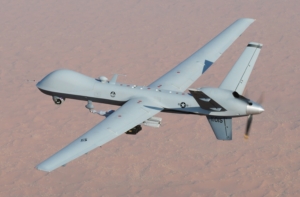
America faces a new chapter in border security as federal mandates and border restrictions are lifted that have been in place since the outbreak of COVID. If the Department of Homeland Security (DHS) is correct, daily border crossings will soon surge by thousands. To counter the accompanying challenges, new programs have been designed and funded to provide congestion mitigation, more efficient operations, and increased surveillance. These new programs, along with a number of existing operations that have received additional funding, will result in hundreds of new contracting opportunities.
 The U.S. Customs Border Control and Protection (CBP) was recently granted $10 million in funding to purchase various types of drone technology upgrades. This additional revenue will add to the $56.8 million baseline funding for CBP for purchase of ground support equipment, aircraft upgrades, a Detect and Avoid System upgrade, and highly specialized electro-optical/infrared sensors. The objective will be to enable CBP operators to fly unmanned aircraft across thousands of miles from ground control stations.
The U.S. Customs Border Control and Protection (CBP) was recently granted $10 million in funding to purchase various types of drone technology upgrades. This additional revenue will add to the $56.8 million baseline funding for CBP for purchase of ground support equipment, aircraft upgrades, a Detect and Avoid System upgrade, and highly specialized electro-optical/infrared sensors. The objective will be to enable CBP operators to fly unmanned aircraft across thousands of miles from ground control stations.
Another $60.3 million is available for a project to improve agency-wide coordination using modernized and consolidated IT architecture. The project, referred to as the Border Enforcement Coordination Network, will improve the interface and data integration of mission critical border enforcement technology.
As border control officials track international commerce across borders, a data consolidation program is also planned. A $16.2 million investment in cloud migration services will streamline the oversight of import and export data. The data consolidation program will create a platform that aligns with other agency initiatives.
Federal funding of $13.5 million will fuel an Integrated Surveillance Towers program. This effort will consolidate all surveillance towers and reduce personnel currently required to monitor disconnected and individually contracted pieces of equipment.
Even as all this new funding flows to the CBP, the federal government continues to allocate more money to traditional partnership programs. In June, DHS will purchase new contracts for medical supplies. The agency will conduct a competitive acquisition, and release solicitation documents for new medical supply contracts. The contracts will be large – likely averaging about $20 million each. The procurement will be advertised in conjunction with solicitations for the construction of two new border patrol stations for $60 million and an $18 million trade and cargo academy.
More funding for border projects is available from the $3.4 billion Infrastructure Investment and Jobs Act (IIJA), which may be used to purchase technology for monitoring illegal border activity.
Upcoming projects in California are being designed to mitigate the expected swell in congestion at border crossings. A sum of $1 billion is available for initiatives to transform the Otay Mesa East Port of Entry near San Diego. The funding will be used to connect 27 new northbound lanes and eight southbound lanes. It can also be used to purchase a border wait time system and new tolling technology. Several contracting opportunities will be available soon that are related to demolition of the existing border structure between Tijuana and Otay Mesa in June. The work required will provide space for construction of a new, modernized entryway.
Another $100 million is available for the final phase of California’s Calexico West land port of entry modernization and expansion effort to reduce border wait times. The funding will also allow the CBP to devote additional resources to an enhanced, more responsive kind of operational security.
In Texas, another $100 million is available to modernize the Gateway Land Port of Entry. This crossing marks a stretch of borderland adjacent to Brownsville. As one of the busiest pedestrian crossings on the southern border, Gateway’s operational capacity has often been strained by long and costly wait times. Modernization improvements will increase the efficiency of traffic management and help restrict illegal activity.
An even larger modernization project will occur at the Bridge of the Americas, a port facility in El Paso. The project’s $600 million funding allocation will be used for site acquisition, design, and construction of new facilities at this border crossing that regularly deadlocks because of traffic.
These projects are similar to many other initiatives being launched all along the country’s southern border. Contracting opportunities of all types exist, and funding is readily available. Interested parties may obtain more information about project timelines and requirements that may be included in upcoming solicitations by contacting local officials.
